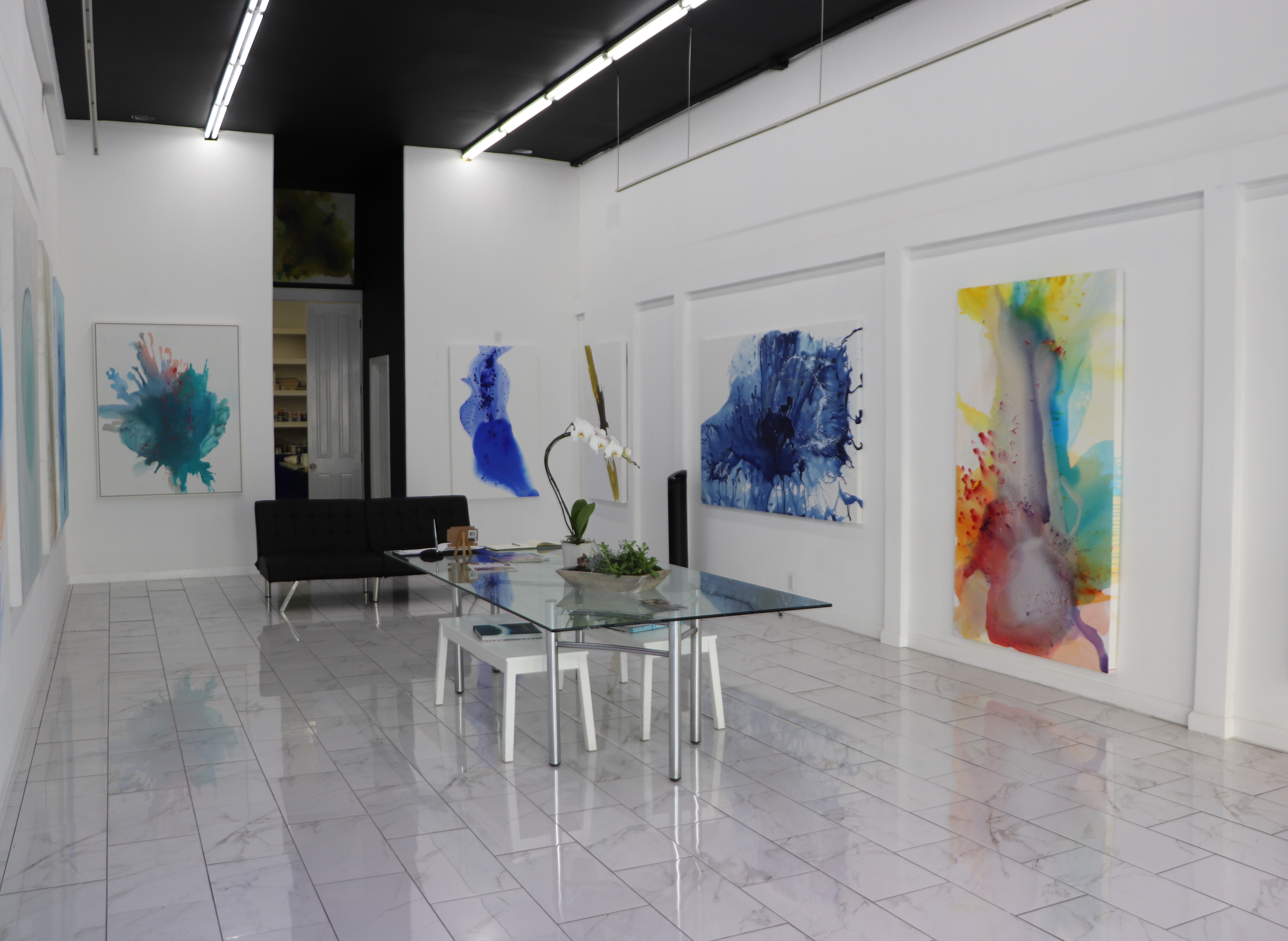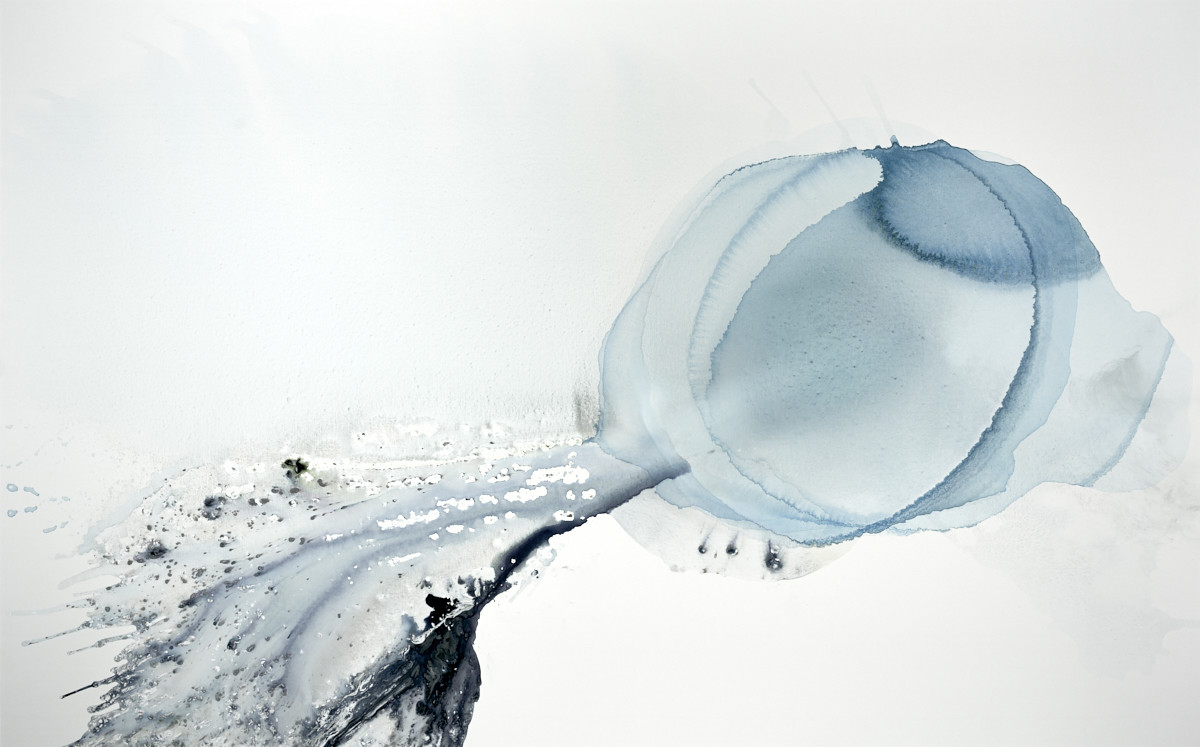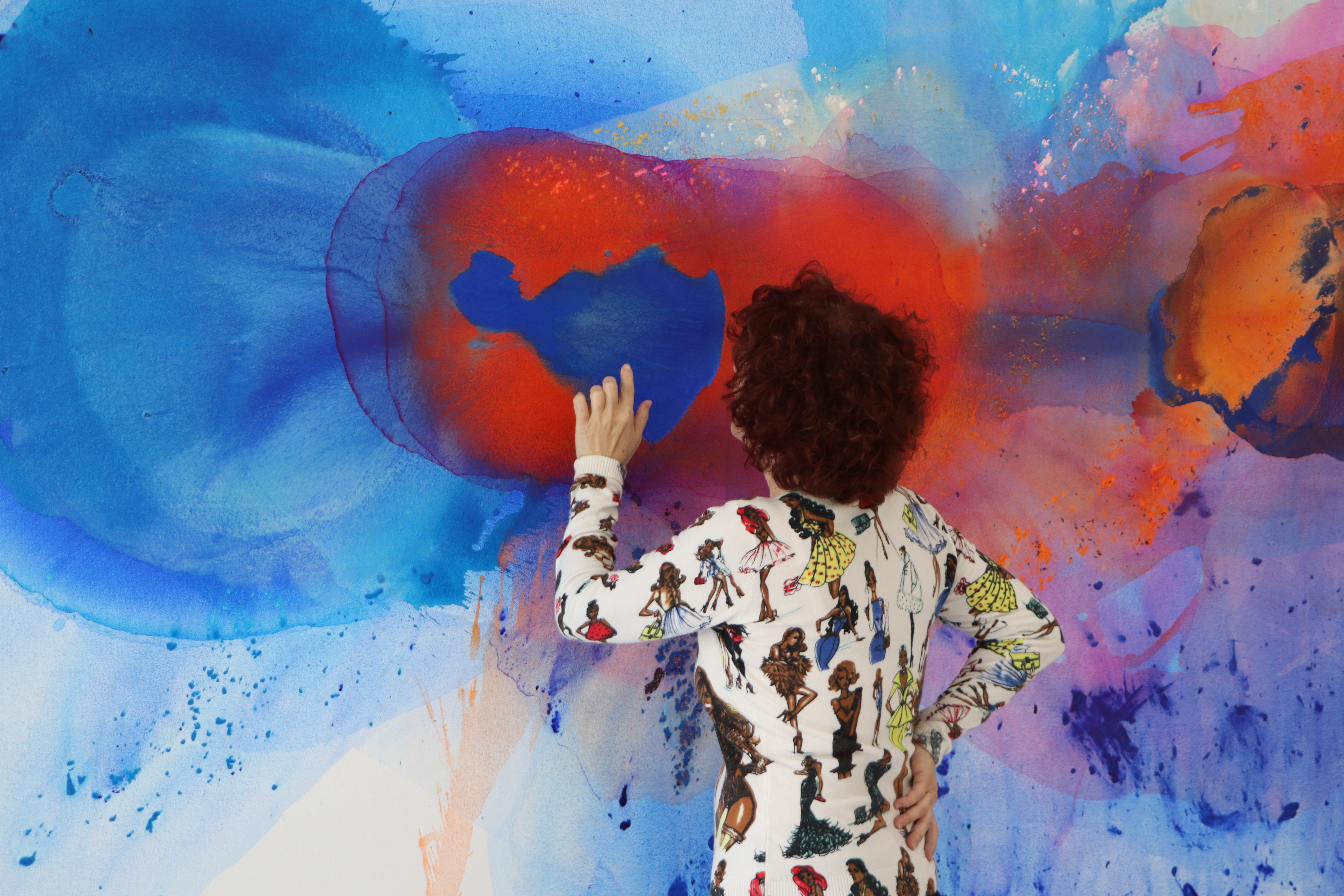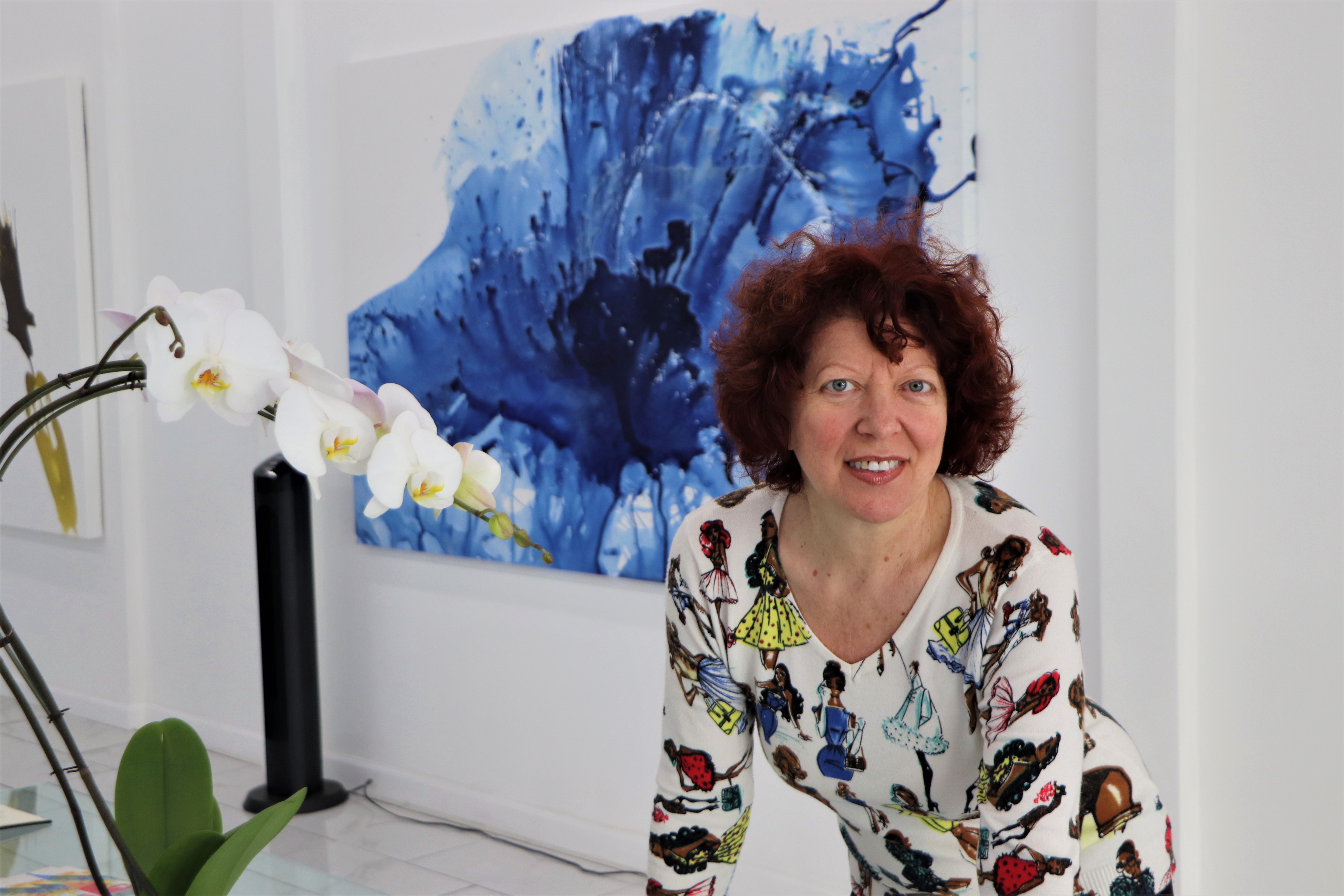The last few weeks have been quite taxing on me. There were my mother’s health issues, my move into a new home, the usual stress of living in a big city paired with unexpected spending for repairs, and on top of this having to deal with a lot of uncertainty in my life. Thus, I arrived at BertaArt Studio Gallery, like a ship wreck.

However, as soon as I entered the gallery space and saw Clara Berta’s paintings, I immediately felt refreshed and lost in wonder. My mind was absorbed by the surrounding images on the wall. They seemed familiar, and yet, unique, reminding me of jelly fish, subaquatic plants, erupting volcanoes, the sun shining through a fragile cloud layer, the pattern of the cosmos, flower fossils, or a liquid spreading out underneath a microscope slide. Some of her paintings even had surrealistic features in them, such as O, which looks, as if a stream of flushing water is breaking out from a magnifying glass.

Their translucent and organic appearance, also reminded me of the ink wash on paper drawings by Victor Hugo. However, in contrast to Hugo’s works Berta’s abstracts are often eager to attract through their exuberant colors with lots of white space surrounding them. “I create balance by showing white space,” she said.

When I asked her, how she creates her work, she pointed at the floor and explained she pours paint on the canvas and lifts it up with a palette knife, in another series she uses the knife to create certain types of textures in a similar manner as her paragon Gerhard Richter. “I love his use of the huge palette knife, which allows him to move his paint smoothly and to create new layers,” she said. “The brush has never been for me. I think it’s too controlling.”
As Clara guided me through the gallery, she suddenly said, “one can tell, I’m from Hungary!” and then she would sometimes mention that there is still something missing in her paintings. One painting was too blue, another had too much white in it.
“I enjoy painting with vibrant colors as they get me excited and boost my energy and lift me up! Every color creates a different feeling in my mind and body, which together create a beautiful expression of my soul. Blue is exciting and energizing as it is also calming in many ways. It associates water, ocean and more! I love the ocean and the sensual feeling of being in water. Art collectors buy my paintings because of their energy and their desire to find healing!”

When Berta said that, I realized she applied old wisdom to her paintings, thus, the idea of water as a source of healing, which goes back to ancient Greece and Rome, where public baths were used for relaxation and socializing. In medicine, water is used to treat chronic and acute illnesses for example in hydrotherapy. Besides, color therapy is one of the oldest methods of treatment. According to Dietmar Krämer’s “Neue Therapien mit Farben, Klängen und Metallen”, the Egyptians built color temples for healing, which included seven rooms of a different color and depending on the needs of the ill persons, they were sent into the room with the appropriate color which cured them. The German writer Johann Wolfgang von Goethe, was one of the first people in Europe, who addressed the effects of color on the human psyche. In 1810 he published his book The Theory of Colors, which he felt prouder of than any of his literary works. “Every color,” he wrote, ” uses a corresponding influence on the mind”. Later the artists picked up on that. In his book Concerning the Spiritual in Art, published in 1912, the Russian painter Wassily Kandinsky wrote: “Color directly influences the soul. Color is the keyboard, the eyes are the hammers, the soul is the piano with many strings. The artist is the hand that plays, touching one key or another purposively, to cause vibrations in the soul.”
Through our conversation, it became clear to me that Clara Berta’s artistic style developed through a chain of experiences in her life and is both a form of rebellion and an antidote to conformity. For one thing, she was brought up in a communist country, in which individual freedom was oppressed and schools offered only a few pleasurable activities. Her parents were common laborers, who “only knew about hard work”, she said. Berta tried to liberate herself from this, when she came to the US and took a poetry class, expressing herself through words and after the death of her husband, through color. As many artists, she first started with representational art before she moved on to abstract work and found her unique style, which is a combination of minimalism and abstract expressionism, which employs the tools and knowledge of psychology and medicine.

Hence, Clara Berta, is artist and healer at once. By finding a way to heal herself, she found a way to heal others. May her artistic path inspire and her works lift the spirits of many.
816 South Main Street
Los Angeles, CA 90014

